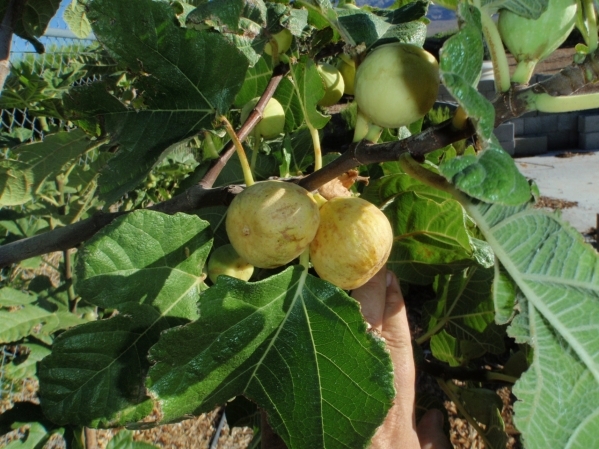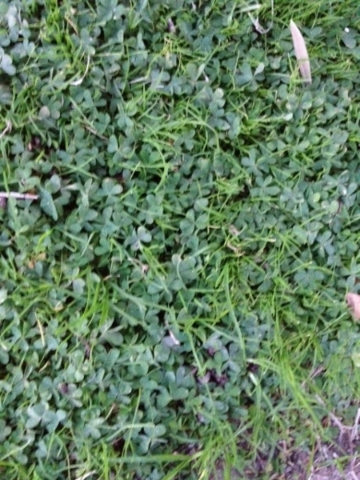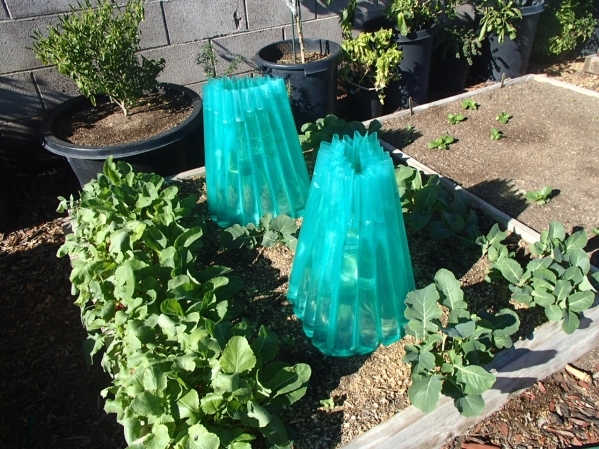Gardening: Warm-season vegetables need protecting right now
Historically, the last frost date is March 15 in the Las Vegas Valley. Planting warm-season vegetables before this date, such as tomatoes, peppers and eggplant, can be a bit risky because of a chance for frost.
Looking ahead at the weather for the next two weeks, I am comfortable that we will not have any more freezing temperatures. However, some warm-season vegetables, such as tomatoes, can experience a setback at low temperatures in the 40s.
When setting out transplants or growing from seed early, it is best to protect many warm-season vegetables from colder night temperatures. Cover them with hot caps or frost blankets if temperatures drop into the 40s. These are temperatures when chilling injury can occur.
There is time remaining to plant some winter vegetables, such as radishes, leaf lettuce, spinach and arugula and harvest them before it starts to get hot. Plant cool-season vegetables now that will be harvested in the next 45 days.
Wind damages tender vegetables in gardens. Even when temperatures are mild, wind will affect the vegetable quality. Put small windbreaks around your growing area. The most effective windbreaks allow about 20 percent of the air to move through it while 80 percent is stopped. Windbreaks protect vegetable gardens a distance of three to five times their height.
Whenever possible, plant different types of vegetables in different in spots in the gardens each year. Rotating vegetables of different families to different spots helps reduce disease problems. If tomatoes (nightshade family) were grown in one spot, then grow onions (onion family) or squash (cucumber family) in this spot the next year. Do not grow something in the same family in the same spot for three years. Read more about this on my blog.
Q: Will the diatomaceous earth I have used in my garden and around fruit trees kill beneficial nematodes?
A: Diatomaceous earth has the same effect on beneficial nematodes as any other nematode. I don't know of any solid research that shows diatomaceous earth will reduce nematode populations. You might be wasting your money.
When nematodes are damaging plants, most recommendations are to mix compost into the soils to reduce nematodes populations and encourage more rapid growth. Some fruit trees, such as stone fruits, are grown on rootstocks, such as Nemaguard, that are somewhat resistant to nematodes.
Some sources will tell you to grow varieties of vegetables resistant to nematodes, reduce nematode populations periodically using a technique called "soil solarization" or abandon the spot. I wish they were easy to control, but they are not.
Q: My fig tree produced almost no fruit and no new growth last year. The leaves looked burned on their perimeter. Any recommendations?
A: This sounds like a water issue: not enough water applied or not watering often enough or both. Water and nitrogen fertilizer is what pushes new growth. They work together.
Fig trees could be considered desert adapted plants (Mediterranean, actually). Lack of enough water is a common problem when growing figs here. I see this a lot with figs grown using drip irrigation.
The amount of water depends on the size of the plant. Generally, productive figs that have been pruned correctly will require about 30 gallons of water once a week at this time of year. This amount will be applied twice a week around May 1 or when temperatures approach 100 degrees.
Cover the soil with wood chips to a depth of 3 to 4 inches (minimum), and extend it to a distance of at least 3 feet in all directions from the trunk. This will help reduce fruit drop.
If the tree is irrigated with drip irrigation, increase the number of emitters or increase the number of minutes, until you approach the volume of water I am recommending.
Flood the area under the tree with water from a hose now and capture this water in a 6-foot diameter basin or moat around the tree. This should help flush any possible salts that may have accumulated in the watered area and get the tree off to a good start.
Rock mulch is not a good idea for figs. There is no reason why you cannot have a bountiful crop with nearly any variety of fig in this climate. They all do well here when they are managed correctly.
Q: I have reddish, clover-looking weeds that have taken over my lawn. Last year, they nearly covered it. I tried weed and feed several times, but that didn't seem to get rid of them. A friend of mine had the same problem and had to remove all of their grass and re-sod their lawn. They bought their own lawnmower and made their landscaper use it because they said the lawnmowers that landscapers use can spread this clover everywhere.
A: the picture you sent to me appears to be oxalis and not clover. Oxalis has a yellow flower. Clovers usually have white, pink or reddish flowers. They both have clover-like leaves.
Oxalis is extremely difficult to control once it gets established. We see them growing in flowerbeds and shrub beds as well as lawns. In beds, it is usually brought in with the plant material as a weed contaminant in the container. But it also can be brought in on lawnmowers.
Focus on weed killers for lawns that include the weed "oxalis" on the label rather than clover. If you are not sure, give me the name of the product in an email, and I can help you from there.
Control it now or in the fall, not during summer heat. If there were not too many, you could consider digging out the contaminated lawn areas to a depth of about 6 inches and replace it with sod.
In your case, it sounds like it's covering the entire lawn. There are many different lawn weed killers labeled for controlling dandelions. They contain several weed killers in different combinations to control a different array of weeds. Look at "dandelion" weed killers, but make sure the label includes controlling oxalis. Use a product that is sprayed rather than a dry granular applied to the lawn.
Q: I have a tree that appears to be dying, but I don't know what it is. I was reading your article about the disease on ash trees and tried to access the pictures of ash trees but couldn't find them. I believe the tree is about 15 years old.
A: Thank you for sending me pictures of your tree. I can tell you it is definitely not an ash tree. It was difficult to identify from the pictures, but from the close-up of the leaves, I think it is Japanese privet, sometimes called wax leaf privet.
This is a tree or sometimes grown as a shrub commonly planted in southern Nevada. If this is wax leaf privet, you should see clusters of white flowers followed by black berries about the size of blueberries in the same clusters.
They frequently have the same problem here, which is dieback of small branches that makes them look very twiggy. I posted a picture of this plant growing in Southern Nevada on my blog that shows this branch dieback and leaf drop I am talking about.
This plant doesn't like our desert environment or drip irrigation very much. It definitely does not like rock mulch. They prefer growing in a much lusher environment.
The only time I really see them looking good is when they're surrounded by a lawn that receives a lot of water. You might try putting bedding plants that require watering every couple of days and surrounding the tree with wood mulch or a very lush lawn.
They do great in East Texas all the way back to the Carolinas but do not look all that well in landscapes located in the dry or desert West.
— Bob Morris is a horticulture expert living in Las Vegas and professor emeritus for the University of Nevada. Visit his blog at xtremehorticulture.blogspot.com. Send questions to Extremehort@aol.com.

























